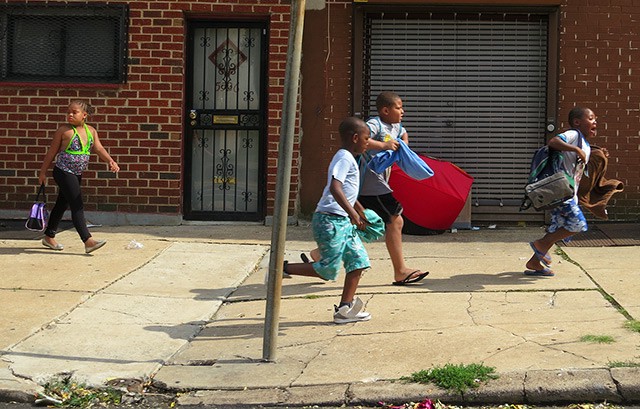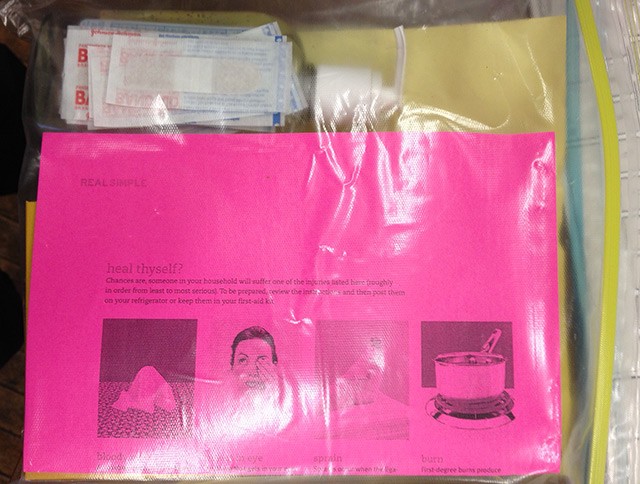Prenez Un Moment Pour Voir Ce Que C'est Que De Voler La Manière D'un Aigle
Oh, no reason other than it is TOTALLY FUCKING AWESOME. I would hate to be the guy on the bird’s back filming it though! [Via]
British Nights Out To Get More Expensive
“I don’t see why the police service or the health service should pick up the duty of care for someone who has chosen to go out and get so drunk that they cannot look after themselves. So why don’t we take them to a drunk cell owned by a commercial company and get the commercial company to look after them during the night until they are sober? When that is over, we will issue them with a fixed penalty and the company will be able to charge them for their care, which would be at a quite significant cost, and that might be a significant deterrent.”
— Will Britain privatize the last bit of fun left on that benighted island?
Michael Sheen And Lizzie Caplan Star In Showtime's 'Masters Of Sex'
by Awl Sponsors
The 50s were a different time. Scientists shied away from honest research on sexuality because there were powerful social taboos in place. William Masters and Virginia Johnson changed all that. Their groundbreaking work in the realm of human sexuality paved the way for the sexual revolution of the 60s. This fall Showtime’s drama ‘Masters of Sex’ brings this fascinating couple to the screen. This behind-the-scenes video from Showtime is a sneak peek of the show’s characters and setting.
Showtime’s ‘Masters of Sex’ premiers on Sunday, September 29th at 10PM ET/PT. Check out sho.com for more.
Ask An Older Parent Or Relative What "George Gurley" Was
“Finding an unpublished George Gurley piece is like opening a perfectly written time capsule. In May 2001, New York City was preparing to say farewell to a term-limited Rudy Giuliani and welcome anyone from Mark Green to Freddy Ferrer to Michael Bloomberg as its first new leader in eight years. An intrepid young Observer reporter named George Gurley hit the party scene to ask prominent New Yorkers what they thought would happen to the city. He wrote it up and then … it disappeared.
— You know what? It IS like opening a time capsule. It really, really is.
My Capacious-Cheeked Companions Turned Me Bad

“They have previously been accused of being aggressive, untrustworthy and deceitful, but now wide-faced men have also been blamed for selfishness in other people. New research by the University of California, Riverside, has revealed that when people interact with men with wider faces they are more prone to selfishness and their selfish behaviour elicits selfish behaviour in others.”
— We should all get together later this afternoon and figure out when we’re each using the “it wasn’t my fault, it was that broad-faced bastard I was hanging out with” excuse to get out of trouble so we don’t ruin it through overexposure.
Nipples Corrected
“A previous version of this story incorrectly quoted Dropbox co-founder Drew Houston saying ‘anyone with nipples’ instead of ‘anyone with a pulse.’”
— In this case, the Internet is right, it IS a pretty great correction. Here’s how it read originally: “Instead of cursing his luck and taking a nap, however, Houston started coding a version of what would become Dropbox’s signature folder, the portal to an app that magically holds and syncs the same files on every computer and mobile device where you install it. He soon saw that what he was making had the potential to be useful to everyone. ‘You think about who needs Dropbox,’ he said years later, ‘and it’s just about anybody with nipples.’”
Fire All The Op-Ed Columnists
No, don’t really do that. Probably. But: can any human being produce two or more Times op-eds a week for years, without being exposed as a lunatic? No. (Except maybe Gail Collins?) Thomas Friedman certainly cannot.
Ladies and gentlemen, Mr Thomas Friedman http://t.co/OCR6TWJAqQ pic.twitter.com/Eum9qKEkIE
— felix salmon (@felixsalmon) September 18, 2013
First They Fired The Nurses And Librarians, Then They Fired The Guidance Counselors
by Lucy Madison

Photo of kids in Southwest Philadelphia in the last days of this summer before school, by Paul Sableman.
Last week, as the 2013 school year officially began, Philadelphia’s schools faced a $304 million budget shortfall. Also: the teachers’ union contract has expired, 24 schools closed over the summer, and — to boot! — more than 2,100 school employees were laid off. And then it was time for approximately 134,000 students to go back to school.
Students at 115 of the district’s 212 public schools will not have access to a full-time guidance counselor this year. Many won’t have a full-time nurse. Some will have workbooks only if their teachers are willing to pay for them, or if their school happens to have a surplus from the previous year. Students are able to play sports in the fall but not, as of now, in the winter or spring.
If a lock breaks, is there room in the budget for a locksmith? With only minimal support staff, who’s eyeing the doors for intruders? Without paper, how will teachers distribute worksheets and permission slips? And if there’s no guidance counselor, what becomes of a suicidal kid?
These are some of the things Philadelphia teachers worry about.

The Philadelphia school district has a years-long history of budget shortfalls: In 1998, the district schools were so underfunded that the superintendent threatened to shut them down. This was part of the reason the state took over the district in 2001. Now, the School Reform Commission (SRC) — a five-person committee whose members are appointed by the state and the city — governs the district. It was the SRC that last spring voted to approve the so-called “doomsday budget,” a $2.4 billion plan that ditched 3,783 district employees.
After much shouting this June, the city was able to borrow $50 million to rehire 1,649 people in August, reducing the budget shortfall to $254 million. But the district remains millions short of what it said it needs to operate, and is now leaning on the union to offer up $133 million in concessions to help close the gap. Republican Governor Tom Corbett has also asked the union for contributions, promising the district an additional $45 million in funding if it agrees to a series of stringent new work rules and spending reductions. In 2011, Corbett’s state budget cut $1.1 billion in education funds.
“The district kind of stripped everything from us a few years back, so we’ve been operating with a skeleton crew for a really long time,” said S., a teacher at Philadelphia’s Spring Garden Elementary School. “We have no full-time nurse, so instead we were given a ‘first aid kit.’” S. expected a kit of the quality one might find in an office supply closet, but was given “a gallon-sized Ziploc bag and it had a box of tissues, a thing of hand sanitizer, like five Band-Aids, and a printout of what to do in the event of a bloody nose.”

The printout was photocopied from Real Simple and headlined, appropriately, “heal thyself?” It includes tips for dealing with “bloody nose,” “object in eye,” “sprain,” and “burn,” and gives advice such as “If you have splashed a chemical (such as bleach) in your eye or have an object embedded in it, call 911.”
“I picked it up,” S. said, “and said, like, ‘What the eff is this?’”
First aid kits are not the only materials in short supply. “We don’t have enough textbooks, so we’re not supposed to give out textbooks for the first couple of weeks,” said Daniel Ueda, a math and physics teacher at Central High School, where he says classrooms have rosters of as many as 47 students. Students at Central haven’t been given lockers yet, either.
“No paper. No sign of paper,” said Z., a music teacher at a neighborhood school, and another teacher who wanted to speak anonymously. “The secretary who did payroll is gone. Even if we have money for sports and extracurricular activities, I don’t trust that we will ever get paid for it. Because we don’t have the staff to do the accounting.”
“We have no money for extracurriculars, which is a shame because our school actually just got to be one of the best elementary chess teams in the city,” said Joe Alberti, a fourth-grade teacher at Samuel Powel Elementary School and formerly the chess coach. “We went to the state championships last year for the first time, but now there’s no funding for it.”
“Three years ago we had a librarian. But there were layoffs and we lost three teachers, including the librarian,” said Larissa Pahomov, an English teacher at Science Leadership Academy. “There was actually talk of maybe trying to move money around and get our librarian back. But then there was a further cut, so we went from three Spanish teachers to two. Now a part of our Spanish program is via Rosetta Stone.”
Nurses and librarians were among the first to get pink-slipped. (According to a district spokesman, there are 15 remaining school librarians employed in the district.) This year, it’s the counselors. In June, all of the school district’s 283 guidance counselors were laid off. 127 of those were restored with that $50 million bump in funding a few months later, but the rest have had to look elsewhere for work. The 115 schools that don’t have a full-time counselor share a band of 30 “roving” counselors.
The absence of full-time counselors presents a nightmare scenario for educators attempting to shepherd kids through the city’s complicated high school and college application processes. According to district spokesman Fernando Gallard, principals must now be responsible for coming up with plans to help their students get into high school and college, in conjunction with the roving counselors and other school personnel. As for dealing with troubled students — another major part of any guidance counselor’s job description — Gallard said the district employs a certain number of crisis counselors (he wasn’t sure how many) in the district’s central office; teachers can call them in a crisis.
“I’m not confident in the plan, I’ll tell you that,” said one teacher at a school where the eighth grade produced two suicide threats last year that resulted in the students’ hospitalization. The teacher said she wasn’t aware these crisis counselors existed, nor did she know how to reach them in the event she might need one. “You would think that if this was the plan, we all would have gotten some big notecard in red with a number on it to call.”
Without counselors, even the smallest problems can be difficult to resolve. Alberti, the fourth grade teacher at Samuel Powel, had a kid wet his pants on the first day of school. “Theoretically I’m supposed to be able to call the office, but I can’t call the office because the phone in my classroom doesn’t work.” Alberti happened to have a volunteer in the room — an undergraduate student studying pre-med who likes helping out in his class — who brought the kid to the office for a change of clothes.
“The office is in a flurry of activity, because it’s within ten minutes of starting the first day of school, so both the principal and the secretary were completely engaged,” he said. The volunteer had the child try to call his parents, but the phone in the office was also broken.
“If my volunteer wasn’t there, I don’t know what would have happened to this kid,” Alberti said. “Maybe he would have just sat in the office all day and cried.”

As less is being given to Philadelphia’s schools, more is being asked of its teachers, many of whom feel pressure to spend their own money on supplies, to fix broken equipment, to preside over extracurricular activities without compensation, and to pick up the slack for the many teachers and administrators who have been laid off.
“I’ve probably spent $300–400 in the last week just to get my classroom started,” said Meghan Smith, a former guidance counselor who was pushed into a teaching role this year. “Everybody’s compensating for what the district isn’t giving and they’re doing that by spending their own money.”
“Anything that breaks I have to try to fix, be it a copier, whiteboard, scanner, etc.,” wrote C., a computer teacher at a school in a low-income area, in an email. “The only way they will get fixed is if I pay for the parts myself and HOPE someone from the district can help, or I can try to fix myself… Most classrooms have two to three computers varying from three to 12 years old, and it is up to me, with spit and bubble gum, to keep them up and running.”
The most sophisticated pieces of classroom equipment are also the ones that tend to be the most expensive to fix and replace. “We have smart boards and white boards that have a projector, which is great, but those bulbs are hugely expensive,” said Kristin Luebbert, a social studies and reading teacher at Bache-Martin Elementary School. “They’re over $200. So as those bulbs burn out, we’re not going to get new ones unless we buy them ourselves.”
Consequently, teachers are getting creative at finding ways to come up with money. Ueda, the physics teacher at Central, helped his robotics team, the Robolancers, launch a campaign aimed at raising money to keep his and other Philly robotics programs alive. Thousands of other teachers nationwide use websites like Donors Choose to solicit funds from friends, family members, and benevolent strangers to pay for things they’d like to have in their classrooms but don’t get funding for, be they iPads or a single pencil sharpener.
“I went on to Donors Choose and the website wanted me to post a project. And I’m thinking, project? I need paper!” said B., a veteran teacher in a district school. “I got frustrated and I thought, you know, I’ll just end up buying this. Because why should I be constantly justifying everything I’m doing? Why are you making me beg for paper?”
Some schools are blessed with particularly active community members who, in parent groups called Home and School associations, often take on some of the fundraising responsibilities themselves.
Brendon Jobs, who recently began teaching at a small music magnet, has air conditioning in his Philadelphia classroom for the first time in his seven years of teaching; a member of his school’s Home and School association has a hookup with a union that does pro bono AC installation work.
“This is the first year where I’m not sweating out my good clothes in September and October,” he said.
But not every school has the luxury of an active parents group. “It’s great for the schools that do,” said Luebbert.”But it’s inequitable. It’s unfair that every kid doesn’t get to have all the things that the super-proactive schools get to have for their kids.”
Even schools with strong parent groups worry that, as cutbacks mount, the active parents will ultimately ditch their schools for suburban ones or Philly charter schools. When “you don’t have the laptops, when you don’t have the tech working anymore, that makes the school seem not up to date. That makes maybe parents want to go somewhere else,” Luebbert said.
Therein lies the vicious cycle, she said: Funding shortages lead schools to have inferior facilities, which lead active parents to move their kids to private or charter schools. But schools are allocated money based on enrollment numbers, so they lose money when the kids leave, and therefore have even fewer resources to work with.
“My biggest qualm with the charter school is that, one, I don’t think it’s better and, two, it takes money away from a traditional public school,” said Ueda. “By taking money and resources away, you’re making the traditional public school worse.” According to the district, 28% of the 298 schools in the district are charter schools, and they serve about 32% of all students: The district has 63,000 students in charter schools and 134,000 in public schools.
As students and dollars move out of the district, many of its teachers are tempted to look elsewhere for a better deal — especially now that the district has asked that they take pay cuts of between five and 13%.
“How could I possibly take less money that what I’m making?” said Ueda. “It would be really hard for me to leave the system because of my students, but the district makes it so hard to stay. How are we expected to keep coming back for more?”
District spokesman Gallard said those savings are necessary to give students the educations they deserve. He said the idea of getting more money from the state for this fiscal year is a “long shot,” although given the union’s staunch opposition to the teacher pay cuts, both options are unlikely.
“People are afraid. If things don’t change at the end of the school year, I know I will look to leave the district,” said Smith. “If, God forbid, this pay cut goes through, people won’t be able to live. I won’t be able to pay my mortgage.”
“You know, I didn’t become a teacher to get rich, clearly,” said S., the teacher at Spring Garden. “I didn’t create this budget crisis. However, now they want to take away our salaries. Now we have to get our own supplies. Eventually it will get to the point where I’m not making any money at all! And at that point I might as well go volunteer somewhere that appreciates me.”
Lucy Madison is a New York-based writer and reporter. Her last piece for The Awl was How 25 National Magazine Award Nominations Went To 25 Male Writers.
New York City, September 16, 2013

★★ The morning raindrops were large for how sparse they were. It was just wet enough for the dog shit to melt. The corrugated metal of the scaffold out on Broadway heaved and groaned under some unseen activity, releasing a splat of water from its seams. Later there was blue sky out one set of windows, but it was still gray and chilly out on the fire escape. Five o’clock arrived and it was as if the sun hadn’t ever really risen. The clouds were attractively rumpled, and even had blue bits showing through — a reminder that the sky knew what light was, but just wasn’t letting anyone have any. At the last possible moment, it relented; the persistent gray was abruptly drowned out by screaming metallic pinks.
Moon Made Out Of Garbage Prettier Than Actual Garbagey Moon
“The ‘Rising Moon’ lights up in Hong Kong ahead of the Mid-autumn festival. The 10-meter or 32-foot high dome was created to celebrate the night when the moon is at its roundest and brightest.”
